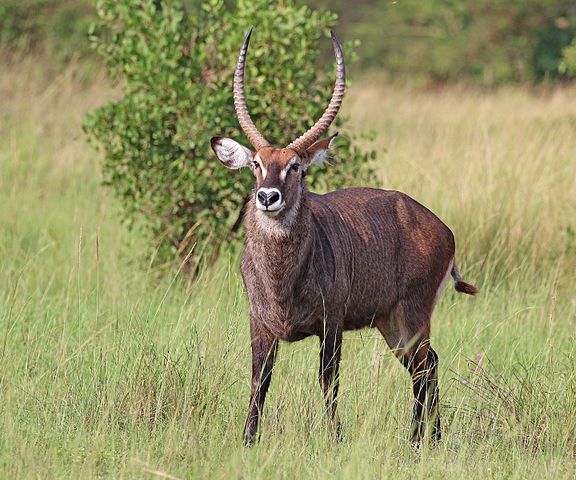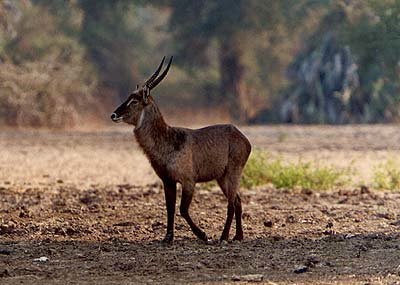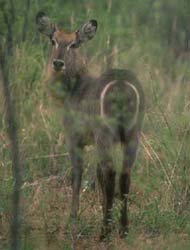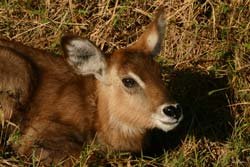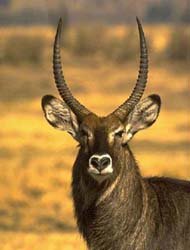A native to southern and eastern regions of the African continent, the Waterbuck is a species of antelope that will surely captivate your attention. Compared to other antelopes, it is relatively more robust in size.
Read further to learn more about the Waterbuck.
What is a Waterbuck?
The Waterbuck is a huge antelope that is mainly found in sub-Saharan Africa. Irish naturalist William Ogilby was the first person who described this animal in 1833. Also known as the Kobus ellipsiprymnus, the Waterbuck is one of the six species of the Kobus genus.
There exist two groups of Waterbuck: The ellipsiprymnus (or common Waterbuck) group and the defassa group. The former is found in southeast Africa, while the latter can be found in eastern, western, and central Africa.
The Waterbuck was categorized as Least Concern by the International Union of Conservation of Nature (IUCN) Red List. However, the defassa group of Waterbucks is listed as Near Threatened. Their population is in continuous decline because of human interventions such as poaching and habitat destruction.
Its seven levels of scientific classification are as follows:
Kingdom: Animalia
Phylum: Chordata
Class: Mammalia
Order: Artiodactyla
Family: Bovidae
Genus: Kobus
Species: K. ellipsiprymnus
Physical description of a Waterbuck
A Waterbuck possesses a long body and neck, but it has relatively short legs. It has a white muzzle and a coarse mane on its neck. It has a cream-colored patch located on its throat. Its head to body length is approximately 177 - 235 cm, while its shoulder height ranges from 120 – 136 cm. Its body color ranges from gray to reddish-brown, and as the Waterbuck gets old, its body color darkens. Males usually have darker bodies than females.
Only male Waterbucks possess horns. It extends up to 99 cm in length. Several studies suggest that horns’ length is correlated with a Waterbuck’s age.
There are striking contrasts between the two groups of Waterbuck in terms of physical appearances. For instance, defassa Waterbucks have longer tails, but common Waterbucks are larger in size.
Distribution and habitat of a Waterbuck
Waterbucks are primarily grazers and are much dependent on water sources, that is why they are mainly found in scrublands and grassland savannas near the rivers, valleys, and lakes. It usually prefers dry areas, but it makes sure that there is a nearby water source.
The behavior of a Waterbuck
Waterbucks are highly gregarious mammals, forming massive herds consisting of six to thirty Waterbucks each herd. Each herd consists of female Waterbucks and their youngs or bachelor Waterbucks.
Their horns begin to form when they reach eight months old. When horns start appearing in young males, they leave their respective herds to join a herd composed of bachelor males. These bachelor males grow and hunt together until they reach maturity. When they reach maturation, which happens when they reach the age of five, male Waterbucks exhibit territorial behavior. They get more territorial when they reach the age of 6 to 9.
Meanwhile, female Waterbucks are commonly found alone or with another female of its kind.
More fascinating facts about Waterbucks
These animals are known for their very fascinating way to hide from their predators. They enter the water to ward off predators, including lions, cheetahs, leopards, Nile crocodiles, and hyenas. Sometimes, territorial male Waterbucks attack their predators.
Their predators are not their only nemesis—diseases and parasites, too. Waterbucks are known to be susceptible to a wide variety of diseases such as ulcers, kidney stones, foot-and-mouth disease, bovine virus diarrhea, yellow fever, anthrax, and lungworm infection. There were also 27 species of ixodid ticks that have been sighted on Waterbucks. Among its internal parasites include tapeworms, liver flukes, helminths, and stomach flukes.
Compared to other species of antelopes, Waterbucks are much slower to reach sexual maturity. Female Waterbucks reach sexual maturity by the age of two or three, while males experience maturation when they reach six years old. Mating between male and female Waterbucks happens when the male starts sniffing the female’s urine and vulva. When the female resists, it attempts to bite the male. But when successful, they will copulate for as many as ten times.
The female Waterbuck’s gestational period is up to seven to eight months. After such, it will give birth to one calf. It will be under the female Waterbuck’s custody until it reaches maturity.
WILDLIFE PARKS AND RESERVES WHERE THIS SPECIES IS FOUND:

